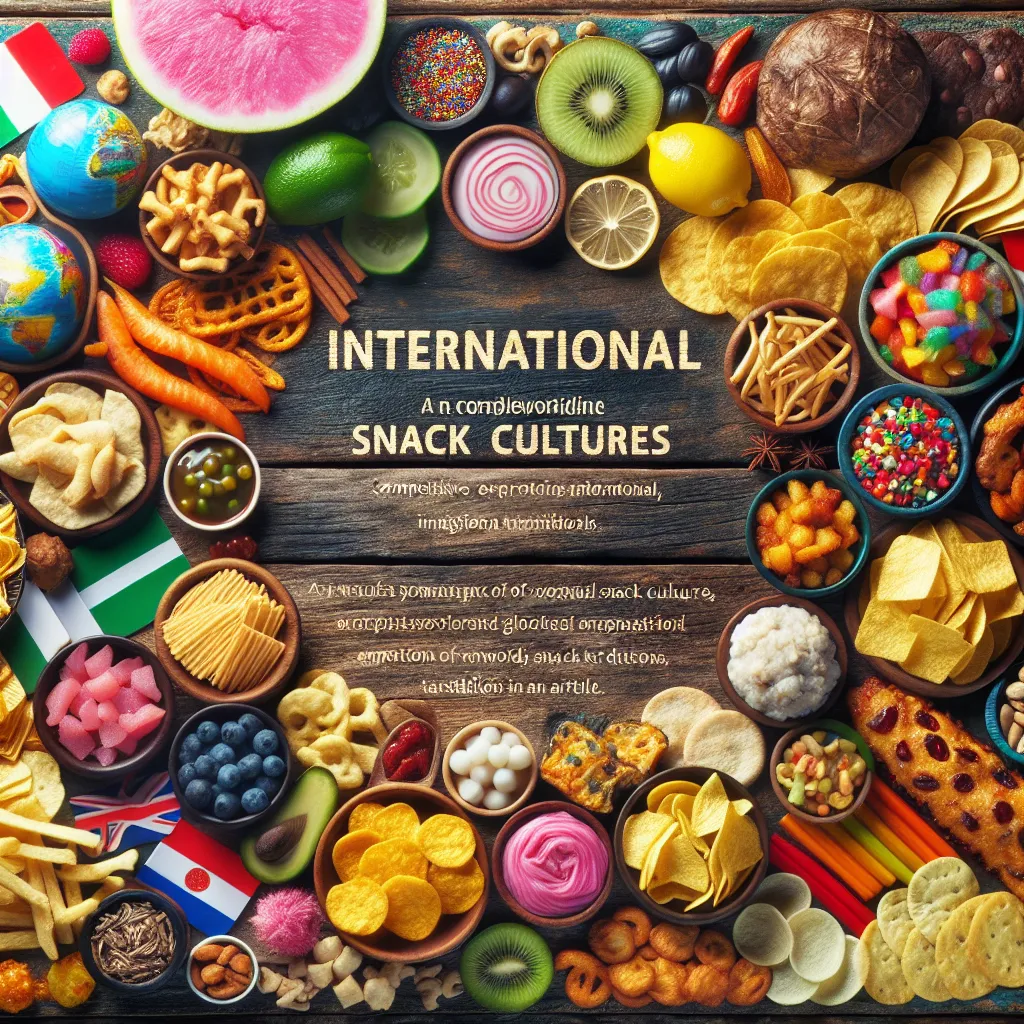The Rise of Fusion Snacks: Blending Global Flavors
One of the most exciting trends in the global snack culture is the rise of fusion snacks, which blend flavors and ingredients from different culinary traditions around the world. This culinary fusion reflects the increasingly interconnected nature of our modern world, where people from diverse backgrounds are coming together to create innovative and delicious new snack experiences.
From Korean barbecue-flavored potato chips to Indian-inspired spicy chocolate, the world of fusion snacks is full of surprising and delightful combinations. These snacks offer a unique opportunity to explore and appreciate the rich diversity of global cuisines, allowing snack enthusiasts to embark on a flavorful culinary journey without leaving their homes.
Furthermore, the popularity of fusion snacks highlights the growing appreciation for multicultural flavors and the willingness to experiment with new taste sensations. Whether it’s the tangy blend of Japanese wasabi with Mexican salsa or the harmonious marriage of Italian herbs with Middle Eastern spices, fusion snacks are pushing the boundaries of traditional snacking and inviting consumers to expand their palates.
As we continue to explore the global snack culture, the phenomenon of fusion snacks serves as a reminder of the endless possibilities for culinary creativity and cross-cultural inspiration. With each bite, snack enthusiasts can savor the harmonious convergence of diverse flavors, celebrating the beauty of cultural exchange through the universal language of food.
Cultural Influence on Snack Foods: From Street Eats to Gourmet Treats
When it comes to exploring the global snack culture, one cannot overlook the profound influence of diverse cultures on the evolution of snack foods. From the vibrant street eats of Asia to the exquisite gourmet treats of Europe, cultural diversity plays a pivotal role in shaping the world of snacking.
One cannot discuss the global snack culture without delving into the rich tapestry of street foods found across various countries. The spicy and tangy flavors of Mexican street corn, the savory aroma of Indian chaat, or the umami-packed skewers of Japanese yakitori – each of these street eats reflects the culinary heritage and traditions of their respective regions. These snacks not only tantalize the taste buds but also offer a glimpse into the cultural fabric of their origins, showcasing a harmonious blend of flavors, textures, and culinary techniques.
Beyond the realm of street eats, the influence of culture on snack foods extends to the world of gourmet indulgences. Consider the delicate pastries of France, the artisanal cheeses of Italy, or the decadent chocolates of Belgium – each of these gourmet treats is a testament to the centuries-old culinary expertise and cultural refinement. Whether it’s the meticulous craftsmanship or the use of premium ingredients, gourmet snack foods encapsulate the essence of cultural influence, offering a sensorial journey that transcends mere sustenance.
The interplay of cultural influence and snack foods is not limited to specific regions but extends to the world at large. With globalization and cross-cultural exchange, the boundaries of snacking have become increasingly fluid, giving rise to fusion snacks that marry diverse culinary traditions. From kimchi quesadillas to curry-infused sandwiches, these innovative snacks exemplify the dynamic nature of cultural influence, paving the way for new gastronomic experiences.
In conclusion, the cultural influence on snack foods is a captivating lens through which to view the diversity and richness of global culinary heritage. Whether savoring the humble street eats or indulging in gourmet delicacies, one can trace a profound connection between snack foods and the cultural tapestry from which they emerge, making the act of snacking not only a gastronomic delight but also a cultural odyssey.

